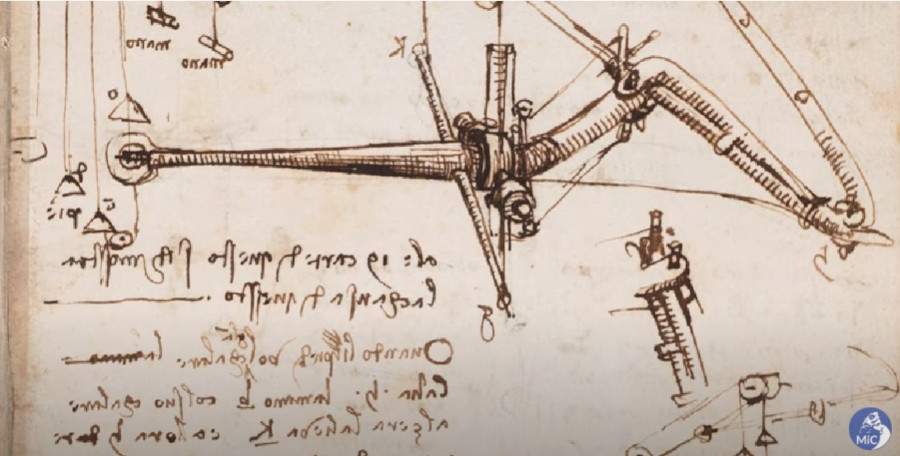MiC celebrates Leonardo's Codex on Flight more than 100 years after its complete reassembly
The Ministry of Culture is celebrating the precious manuscript of Leonardo da Vinci’s Codex on Flight, more than 100 years after it was reassembled in its entirety, with a mini-documentary to retrace some of the most unique episodes that led to it becoming part of the library collection of the Royal Library of Turin.
In the short film, the director of the Royal Museums, Enrica Pagella, and the director of the Royal Library, Giuseppina Mussari, show the pages of the manuscript, which, full of notes, sketches and observations, offer evidence of the study the master undertook on the physical laws underlying the flight of birds. The research was aimed at building a machine that would enable man to fly.
His studies, carried out more than five centuries ago, still retain great value today. “The Nobel Prize winner for physics Giorgio Parisi,” says Enrica Pagella, “explained how current research under way at Sapienza in Rome and Normale in Pisa allows us to interpret some social attitudes by studying the behavior of birds in flight, particularly that of starlings. Even today we are still simultaneously wondering about the fate of humans through observation of our surroundings.”
The Codex on Flight, written in Leonardo’s typical right-to-left handwriting, is configured more like an ante litteram notepad, containing the notes Leonardo took during his own studies on flight. The written part is enriched by several drawings and preparatory sketches of the machines and inventions that, as Giuseppina Mussari recalls, “serve Leonardo to fix thoughts and reflections: the two writing systems are dialoguing.”
Leonardo undertook the study of flight several times: at first, when he was living in Milan at the end of the 15th century, he focused mainly on the mechanical aspect of the action of flight and what made it possible, namely the structure of the wings. However, he soon realized that he did not have materials available that were light enough and, therefore, adequate to be able to make a machine capable of flight, just as he lacked the energy that could give propulsion to the craft. Abandoning the studies after becoming aware of the unfeasibility of the project, they would be resumed in about 1503, once the scientist had returned to Florence.
“The new insights led to a discovery that was anything but secondary for a sixteenth-century man: the air somehow had its own consistency and it was also that consistency that supported the birds in flight, not just the structure of the wings,” Giuseppina Mussari continues. The many drawings that flank the notes mostly reproduce birds of prey, particularly kites, predatory birds with very large wings that allow them to take advantage of updrafts. But the sheets of the Codex also reproduce some red-stone drawings depicting subjects from life, an architectural plan for a villa that was probably never built, as well as the only Leonardesque inscription not reversed: a shopping list consisting of various foodstuffs with their respective prices.
Donated in 1893 to King Umberto I by scholars Giovanni Piumati and Theodor Sabachnikoff, who had unearthed it incomplete in the antiques market, the small notebook of thirty-eight pages thus became part of the Royal Library of Turin. However, it was not totally reassembled until after 1920 with Geneva-born Henri Fatio’s gift to Victor Emmanuel III of the four missing sheets.
The video is available on MiC’s YouTube channel https://youtu.be/J9dnM40BlPI
 |
| MiC celebrates Leonardo's Codex on Flight more than 100 years after its complete reassembly |
Warning: the translation into English of the original Italian article was created using automatic tools. We undertake to review all articles, but we do not guarantee the total absence of inaccuracies in the translation due to the program. You can find the original by clicking on the ITA button. If you find any mistake,please contact us.





























